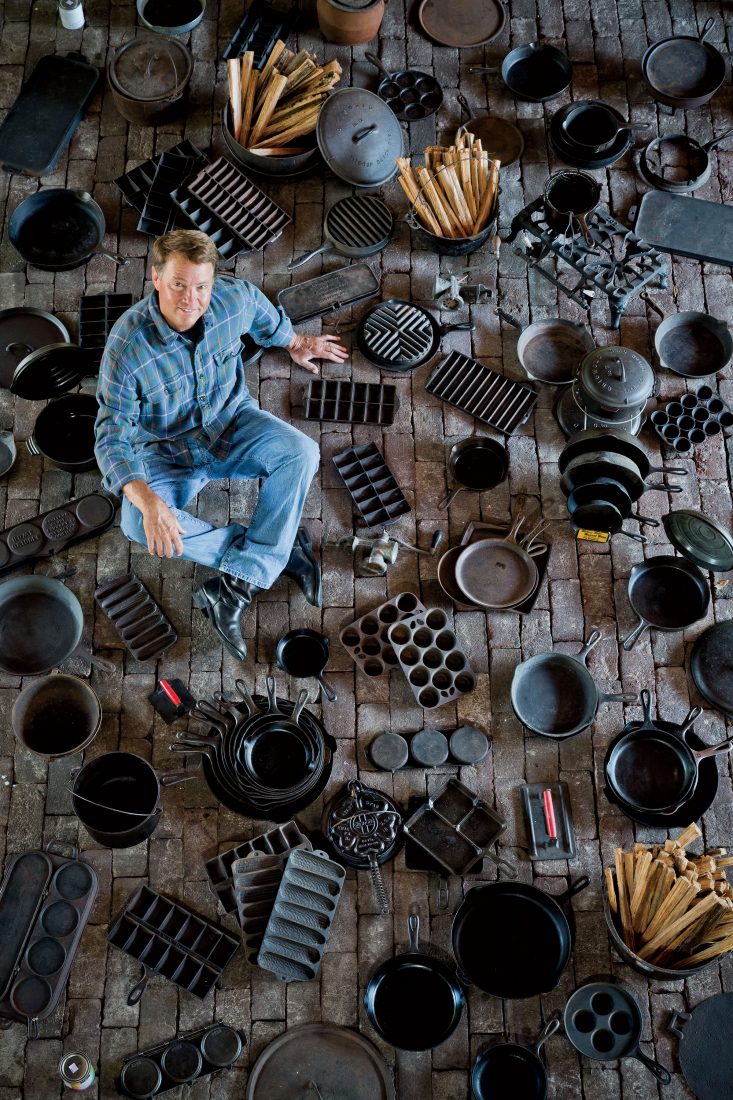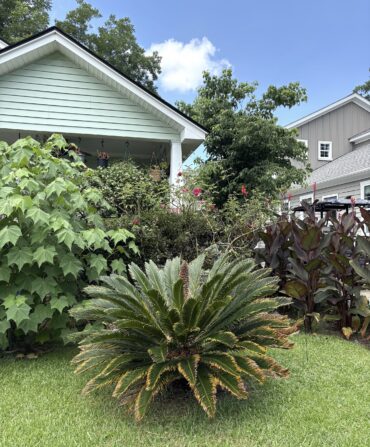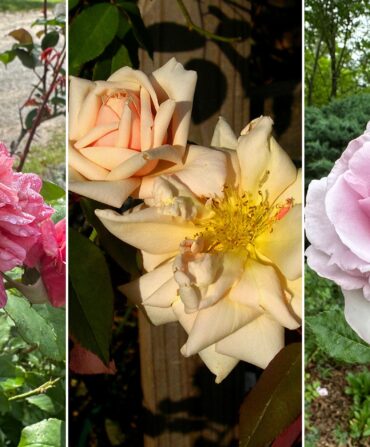It all started with fried bologna. “When I was a kid, I had a fried bologna sandwich for lunch just about every day,” says the professional golfer and 2012 Ryder Cup captain Davis Love III, standing over a stack of cast-iron skillets on a warm day at his home in St. Simons, Georgia. “And my mom always fried the bologna on cast iron.”
Eventually, Love’s mother, who grew up cooking with cast iron on a farm in North Carolina, taught her son to make his own sandwiches. Then Love got older, moved out, and got married. His mother gave him a couple of her skillets to use in his first kitchen.
That’s when his collection started, though he’s hesitant to label it that. “Collection assumes a strategy,” Love says. “This was just an interest. I’d see a pan in an antique store, or a friend would give me one.” Nonetheless, a collection began to take shape. A friend saw the cookware piling up and gave Love a book about Griswold and Wagner, two companies that dominated cast iron in the early and mid-twentieth century. After paging through it, Love started to look for specific pieces—Dutch ovens, waffle irons, skillets large and small.
 “I wanted a skillet in each size,” he says. The typical cast-iron skillet might be a No. 8 or No. 9, big enough to fry a few slices of bologna at once, but not so big that the average cook can’t hoist it comfortably onto a stove top. Collectors look for the rarities, the tiny No. 2s and the giant No. 20s, which were produced in far smaller numbers than the rest. An antique No. 13, an awkward pan too large for a family but too small to feed a crowd, can go for two thousand dollars. Though Love has now spent nearly three decades collecting cast iron, he has yet to nab one of those.
“I wanted a skillet in each size,” he says. The typical cast-iron skillet might be a No. 8 or No. 9, big enough to fry a few slices of bologna at once, but not so big that the average cook can’t hoist it comfortably onto a stove top. Collectors look for the rarities, the tiny No. 2s and the giant No. 20s, which were produced in far smaller numbers than the rest. An antique No. 13, an awkward pan too large for a family but too small to feed a crowd, can go for two thousand dollars. Though Love has now spent nearly three decades collecting cast iron, he has yet to nab one of those.
Anyone can buy a new piece of cast-iron cookware, but Love has always preferred older pieces. “You feel that?” he asks, running his fingers over the surface of the skillet in his hands. “I just cleaned this pan from the forties. And that’s practically a nonstick surface.” Vintage skillets, he says, were better cast. He pulls out a newer, if equally well-used, skillet. The surface is grainy. “Typically, an older skillet is only worth about fifteen dollars. But if you clean and season it, it’ll last forever. You can cook on a pan that someone used in 1925. I think that’s really cool.”
Getting the rust off old cast iron isn’t easy. At first, Love used electrolysis. He would drop a skillet into a vat of water and baking powder, then shock it until he’d stripped it down to bare metal. Later, he moved on to Coca-Cola, which he’d used as a young golfer to get the tarnish off his copper clubs. Now he prefers a store-bought rust remover.
 After the cleaning, of course, comes the seasoning. Everyone who cooks on cast iron has a slightly different method of curing it. Love’s is fairly relaxed. First, he rubs the cast iron with fat or shortening. Then he sets the oven to 200 degrees and lets his pieces sit in the heat for—well, until he remembers to take them out. “I come back sometimes,” says Love, “and I’m like, ‘Oh my gosh, that pan’s been in there for three days.’”
After the cleaning, of course, comes the seasoning. Everyone who cooks on cast iron has a slightly different method of curing it. Love’s is fairly relaxed. First, he rubs the cast iron with fat or shortening. Then he sets the oven to 200 degrees and lets his pieces sit in the heat for—well, until he remembers to take them out. “I come back sometimes,” says Love, “and I’m like, ‘Oh my gosh, that pan’s been in there for three days.’”
But once that cast iron is seasoned, it lasts. The stacks of skillets, Dutch ovens, and other sundry pieces in Love’s arsenal might be marred by a few rust spots, but most of them display the smooth patina of well-loved cast iron, no small feat considering the scope of his collection. It helps that Love and his family still use the cookware. “My favorite thing to fry is still bologna,” he says. “And I fry a lot of country ham.” He points to a Griswold waffle iron that imprints miniature hearts in place of the usual honeycomb pattern. “Using that old waffle iron is a pain, but I’ll still do it just to show folks that you can.”
Several years ago, Love’s wife, Robin, put a stop to his collecting. He was piling up so many pieces that she’d begun to call it hoarding. But Love still keeps an eye out for one of those No. 13 skillets. And maybe a No. 20, he says, as he walks over to show off another piece.









